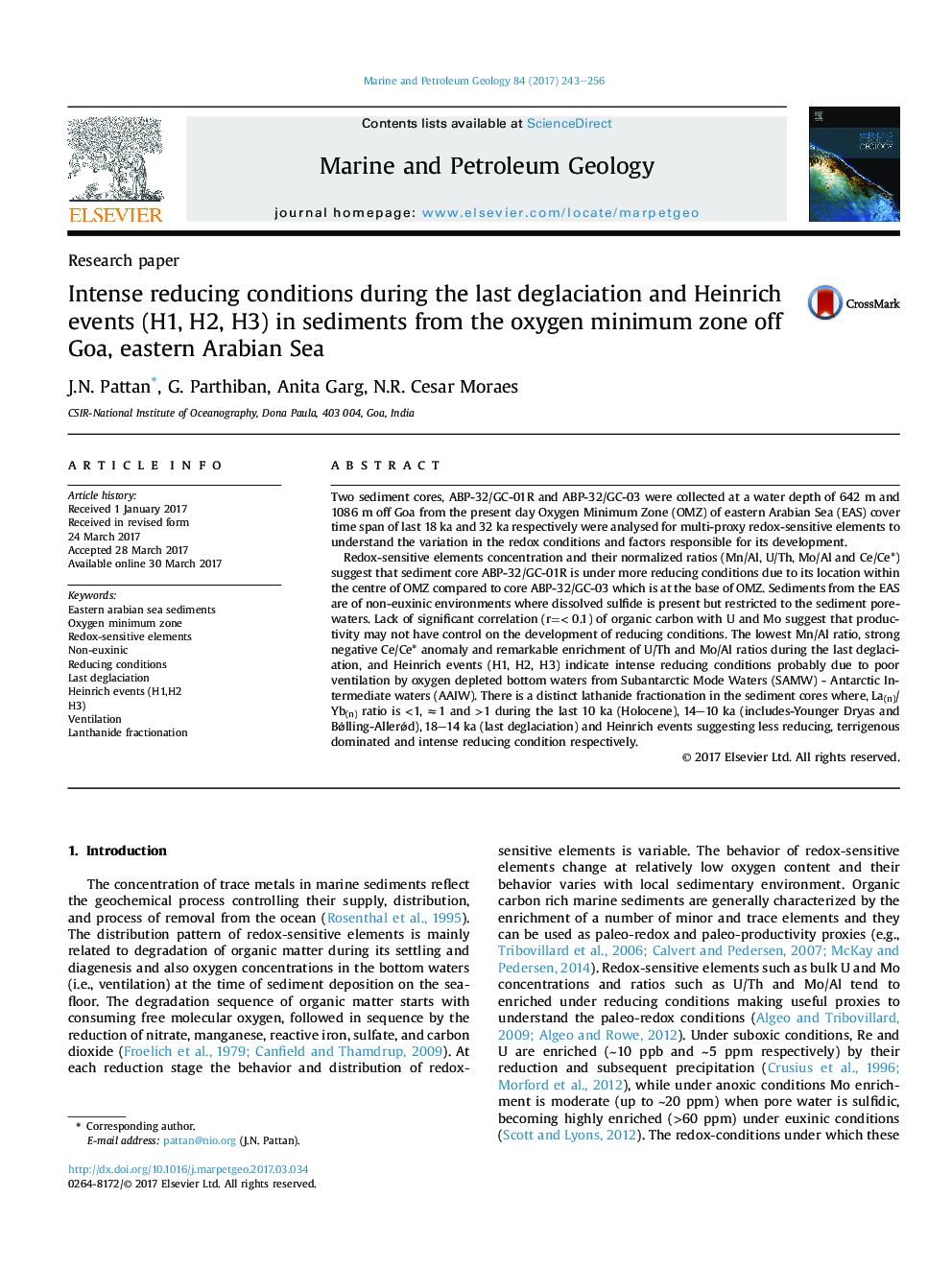| Article ID | Journal | Published Year | Pages | File Type |
|---|---|---|---|---|
| 5782059 | Marine and Petroleum Geology | 2017 | 14 Pages |
Abstract
Redox-sensitive elements concentration and their normalized ratios (Mn/Al, U/Th, Mo/Al and Ce/Ce*) suggest that sediment core ABP-32/GC-01R is under more reducing conditions due to its location within the centre of OMZ compared to core ABP-32/GC-03 which is at the base of OMZ. Sediments from the EAS are of non-euxinic environments where dissolved sulfide is present but restricted to the sediment pore-waters. Lack of significant correlation (r=< 0.1) of organic carbon with U and Mo suggest that productivity may not have control on the development of reducing conditions. The lowest Mn/Al ratio, strong negative Ce/Ce* anomaly and remarkable enrichment of U/Th and Mo/Al ratios during the last deglaciation, and Heinrich events (H1, H2, H3) indicate intense reducing conditions probably due to poor ventilation by oxygen depleted bottom waters from Subantarctic Mode Waters (SAMW) - Antarctic Intermediate waters (AAIW). There is a distinct lathanide fractionation in the sediment cores where, La(n)/Yb(n) ratio is <1, â1 and >1 during the last 10 ka (Holocene), 14-10 ka (includes-Younger Dryas and BÇ¿lling-AllerÇ¿d), 18-14 ka (last deglaciation) and Heinrich events suggesting less reducing, terrigenous dominated and intense reducing condition respectively.
Related Topics
Physical Sciences and Engineering
Earth and Planetary Sciences
Economic Geology
Authors
J.N. Pattan, G. Parthiban, Anita Garg, N.R. Cesar Moraes,
